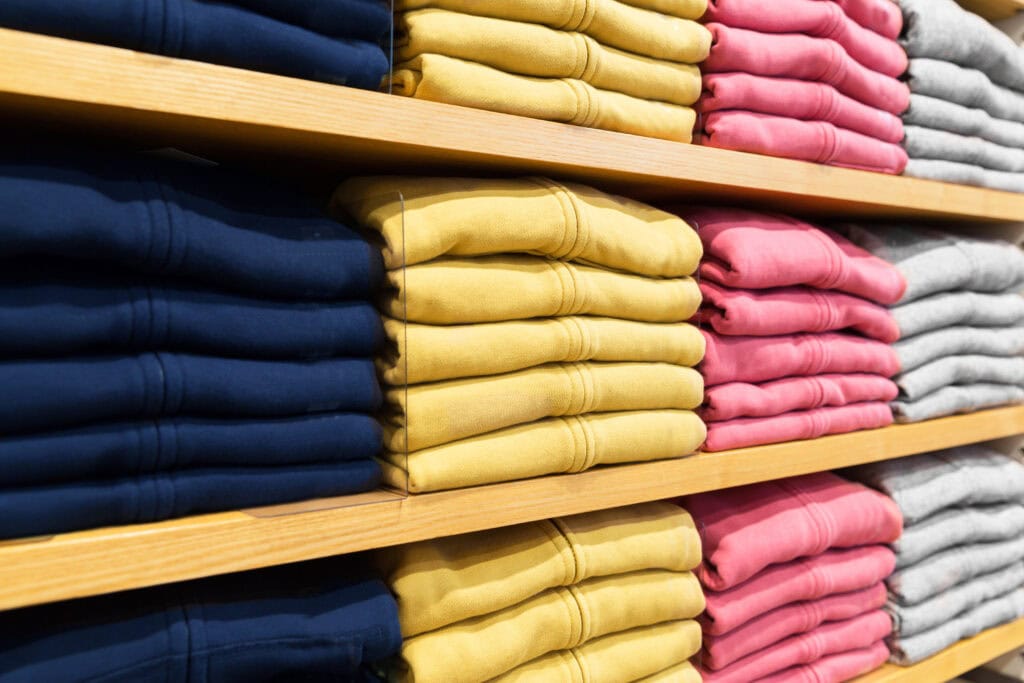Fashion in Flux: How Apparel Brands Are Battling Tariffs, Demand Dips, and Supply Chain Snarls

Leading brands like Gap Inc., Lululemon, and American Eagle prepare for trade uncertainty.
Tariffs are soaring, demand is slipping, supply chains are fraying, and the apparel industry is being tested. Fashion brands are walking a tightrope trying to remain relevant, profitable, and operationally sound in a climate that is anything but predictable.
In recent earnings calls, giants like Gap Inc., American Eagle Outfitters, Abercrombie & Fitch, Lululemon, and others are becoming candid about what it really takes to stay afloat in this turbulent environment, and what is keeping them up at night.
As Gap’s CEO put it, the goal now is to “control the controllables” and future-proof operations as best as possible.
Tariffs Reshape Fashion’s Financials
In spring 2025, the average tariff on U.S. apparel imports reached 20.1%, the highest in decades, following President Trump’s “Liberation Day” tariff announcement. While duty rates on Chinese apparel have spiked dramatically, peaking at 145% before settling at 55% in May, apparel imports from other regions haven’t been spared.
Even without China in the mix, U.S. imports from other countries averaged a 15.2% duty in April, significantly above pre-2025 levels. These costs are hitting hard:
- Gap Inc. warned that tariffs could pile on up to $300 million in incremental costs this year alone. It’s aiming to reduce China sourcing from under 10% in 2024 to under 3% by year-end and limit any single country to 25% by 2026.
- Abercrombie & Fitch expects a $50 million tariff hit this year despite sourcing across 16 countries.
- American Eagle Outfitters anticipates $40 million in added costs and is pushing to get China exposure below 10% by the holidays.
These numbers are not abstract, rather they represent immediate, tangible strain. Brands are responding with supply chain overhauls, vendor negotiations, and even price hikes to survive.
Why the Tariffs Keep Rising
The driving force behind the spikes is the U.S. administration’s aggressive trade realignment. A new round of reciprocal tariffs targets countries deemed to have unfair trade advantages. China, as the world’s largest apparel exporter, is the primary target, but others are increasingly caught in the crossfire.
Even apparel imports from CAFTA-DR nations, traditionally duty-free, saw tariff rates climb to 6.7% in April, largely due to short shipping timelines that made it difficult to front-load shipments ahead of policy changes. Ironically, tariffs meant to boost nearshoring haven’t helped Central America, whose share of U.S. imports dropped 10.3% from last year to 8.8%.
Meanwhile, countries like Vietnam, Bangladesh, Cambodia, Pakistan, and Sri Lanka saw double-digit import growth. However, many of these factories are owned or controlled by Chinese conglomerates, meaning China’s influence persists even if the labels don’t say so.
Eight Ways Apparel Brands Are Redesigning Supply Chains for Tariff Resilience
Facing trade shocks and mounting duties, top brands are making bold structural changes to future-proof operations.
- Map the Full Supply Chain
Mitigating tariffs requires more than shifting Tier 1 suppliers from China to Vietnam or India. The real risks and cost-saving opportunities live deeper in the supply chain. Tier 2 and Tier 3 suppliers often produce fabric, trims, packaging, or components that ultimately define a product’s tariff classification. Without visibility into these layers, brands can unknowingly expose themselves to penalties, misclassification, or loss of eligibility for trade programs.
- Swap Single Sources for Strategic Diversity
Concentration equals risk. While replacing China is difficult, brands are building more balanced sourcing portfolios across Vietnam, India, Bangladesh, and Pakistan. Brands like Target are also redistributing production from China to Central America to improve resilience and stay nimble.
- Embed Scenario Planning
Scenario planning is now a supply chain must-have. Brands need to ask questions like: What happens if tariffs jump 10% overnight? What if a key country is sanctioned? Open costing methods that break down total landed costs, from materials to duties to freight, are essential tools for evaluating alternatives and avoiding surprises.
- Reethink Nearshoring and Reshoring Assumptions
Bringing production closer to home is appealing, but no longer guaranteed to offer tariff relief. With tariffs now affecting Mexico, Canada, and CAFTA-DR nations, brands must scrutinize infrastructure, compliance capabilities, and cost structure in nearshore locations. Tools that track supplier certifications, cross-border logistics, and audit readiness help ensure local is both closer and smarter.
- Balance the Art and the Science of Inventory
Inventory can either cushion the blow or sink the ship. Just-in-case stockpiling can backfire, but too little inventory leaves you vulnerable. Retailers like Williams-Sonoma and Zumiez have bulked up inventory early in 2025, anticipating shipping delays and cost surges. With the right forecasting tools, they’re striking a delicate balance between just-in-time and just-in-case, reducing both overstocks and lost sales.
- Modernize Supply Chain Tech
Many import networks still rely on outdated tools like Microsoft Office 260, making it nearly impossible to respond in real-time. Digitally mature brands are using AI to track chain of custody, automatically categorize key documents (like invoices or bills of lading), and cross-reference supplier data against global watchlists for compliance risk. Interactive dashboards provide real-time visibility into supplier status, tariff exposure, and potential disruptions, providing teams the clarity they need to act fast. AI requires a clean and stable database. Building this foundation is critical.
- Explore Tariff Engineering and Duty Relief Programs
Adjusting a product’s design or materials to shift its classification into a lower tariff bracket can pay off, so can leveraging duty drawback programs or Foreign Trade Zones (FTZs) to recover or avoid costs.
- Layer in Broader Cost Optimization
Passing on tariff costs to consumers may be tempting, but it’s not always viable. Instead, brands are trimming costs in product design, logistics, packaging, and more. Renegotiating contracts, consolidating SKUs, or increasing automation can protect margins without compromising product quality or customer trust.
The New Fabric of Global Trade
The reality is that 90% of import operations still run on email, spreadsheets, and siloed documents, an approach that leaves companies flatfooted when change comes. True resilience starts with replacing outdated tools with systems that support real-time analytics, multi-tier visibility, and automation. Without that foundation, it’s impossible to layer on advanced planning or AI-based risk mitigation.
In fashion, as in global trade, the trends may change, but the brands that adapt quickest will be the ones still in style next season.

